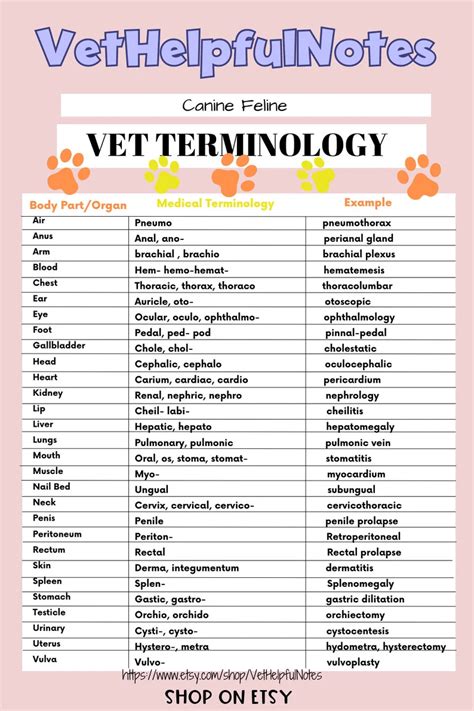Veterinary technicians play a vital role in the animal healthcare industry, providing essential support to veterinarians and ensuring the well-being of animals in their care. To excel in this field, vet techs must stay organized, focused, and knowledgeable about various medical procedures, animal behavior, and health conditions. In this article, we will discuss five essential vet tech cheat sheets that can help you stay on top of your game and provide the best possible care for your furry patients.
The Importance of Vet Tech Cheat Sheets
Vet tech cheat sheets are valuable resources that provide quick access to critical information, helping you make informed decisions and take prompt action in emergency situations. These cheat sheets can be particularly useful during stressful moments, such as when dealing with a critical patient or managing a busy clinic. By having these essential tools at your fingertips, you can:
- Improve patient care and outcomes
- Enhance your productivity and efficiency
- Reduce stress and anxiety
- Stay up-to-date with the latest medical knowledge and best practices
Cheat Sheet #1: Vital Signs and Physical Examination
A thorough physical examination is crucial in veterinary medicine, as it helps identify potential health issues and inform treatment decisions. This cheat sheet provides a comprehensive guide to vital signs and physical examination techniques, including:

- Temperature, pulse, and respiration rates for different species
- Blood pressure measurement techniques
- Examination of the eyes, ears, and nose
- Abdominal palpation and auscultation techniques
Cheat Sheet #2: Medication Administration and Dosage Calculations
Accurate medication administration is critical in veterinary medicine, as it directly affects patient outcomes. This cheat sheet provides a concise guide to medication administration and dosage calculations, including:

- Common medication routes and administration techniques
- Dosage calculation formulas and examples
- Conversion factors for different units of measurement
Cheat Sheet #3: Laboratory Tests and Interpretation
Laboratory tests play a crucial role in veterinary medicine, providing valuable information about a patient's health status. This cheat sheet provides a comprehensive guide to common laboratory tests and their interpretation, including:

- Complete blood count (CBC) and blood chemistry analysis
- Urinalysis and urine protein-to-creatinine ratio
- Fecal examination and parasitology testing
Cheat Sheet #4: Anesthesia and Sedation
Anesthesia and sedation are critical components of veterinary medicine, requiring careful planning and execution to ensure patient safety. This cheat sheet provides a concise guide to anesthesia and sedation, including:

- Anesthetic agents and their properties
- Sedation techniques and protocols
- Monitoring and emergency procedures
Cheat Sheet #5: Emergency and Critical Care
Emergency and critical care situations can be stressful and challenging, requiring prompt action and decisive decision-making. This cheat sheet provides a comprehensive guide to emergency and critical care, including:

- Basic life support techniques, including CPR and oxygen therapy
- Shock and hypotension management
- Seizure and status epilepticus management
Gallery of Veterinary Technician Resources





FAQs
Q: What are the most important vital signs to monitor in veterinary patients?
A: The most important vital signs to monitor in veterinary patients include temperature, pulse, and respiration rate.
Q: How do I calculate medication dosages for veterinary patients?
A: Medication dosages can be calculated using the following formula: dose = (desired dose x weight) / concentration.
Q: What are the most common laboratory tests used in veterinary medicine?
A: The most common laboratory tests used in veterinary medicine include complete blood count (CBC), blood chemistry analysis, urinalysis, and fecal examination.
Q: What are the key components of anesthesia and sedation in veterinary medicine?
A: The key components of anesthesia and sedation in veterinary medicine include anesthetic agents, sedation techniques, and monitoring and emergency procedures.
Q: What are the most critical emergency and critical care situations in veterinary medicine?
A: The most critical emergency and critical care situations in veterinary medicine include basic life support techniques, shock and hypotension management, and seizure and status epilepticus management.
By incorporating these five essential vet tech cheat sheets into your daily practice, you can improve patient care, enhance your productivity and efficiency, and reduce stress and anxiety. Remember to stay organized, focused, and knowledgeable about various medical procedures, animal behavior, and health conditions to excel in the veterinary technician field.
